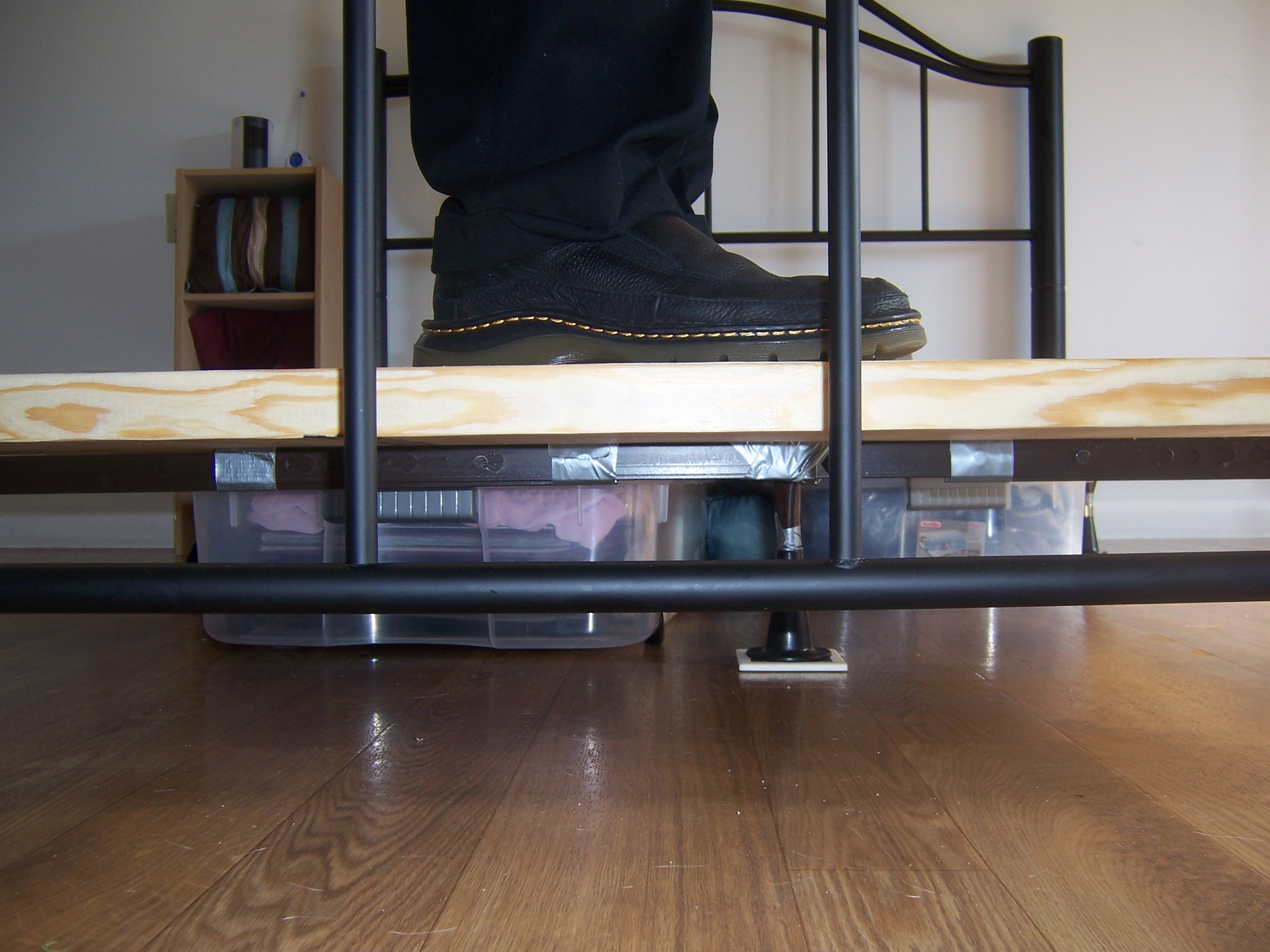 UPDATE 1/13/2011 – Finished building this and it is large. For an outdoor installation or an attic you can stand in this won’t be a problem, but you have to crouch in my attic. Even outdoors, this antenna had only comparable real world performance to the DB8 I had designed from the much more compact and economical youtube design. Again, from a theoretical standpoint, this antenna design should outperform a similar youtube DB4 or DB8. So if resources are plentiful and you are installing this outdoors or in a 7+ foot room, then build this, otherwise, check out my pages for DB4, DB8, and DB16 antennas.
UPDATE 1/13/2011 – Finished building this and it is large. For an outdoor installation or an attic you can stand in this won’t be a problem, but you have to crouch in my attic. Even outdoors, this antenna had only comparable real world performance to the DB8 I had designed from the much more compact and economical youtube design. Again, from a theoretical standpoint, this antenna design should outperform a similar youtube DB4 or DB8. So if resources are plentiful and you are installing this outdoors or in a 7+ foot room, then build this, otherwise, check out my pages for DB4, DB8, and DB16 antennas.
There are many How To’s across the internet to build DB4 Antenna’s because they are simple, cheap, and very effective. Most of them leave out details, are wired incorrectly, or are based off of an old design. This How To can be used to build a DB8 out of two DB4’s, or a single DB4 if you are close to the stations you want. It is also optimized for the channels that are common today, 14-51. The DB8 I build from these plans in the YouTube video(coming soon) will be installed outdoors in the future.
Before you do your build check out the tools on this page to see how many stations you might get and how far away they are.
Here are the professional ones available to buy DB8 Multidirectional HDTV Antenna and the DB4 Multi-Directional HDTV Antenna
. At the time of this writing they were not bad at $60 and $50, respectively. You could build the DB8 below for nothing with junk lying around your house or you could spend about $30 on all new materials for a strong and durable outdoor installation.
Materials
- 42′ 8 to 14 gauge Solid Copper Wire – Remove any insulation (you could also use Coat hangers)
- Cut 16 whiskers, 19.5” each
- Cut 4 transmission lines, 30” each
- Cut 2 transmission lines, 39” each
- 6’ piece of Wood, I will use a 1×3, look in a lumber yards scrap
- 22 1” Screws
- 22 Regular or Lock Washers
- 1 Balun
(Available at Amazon($2.99 + FSSS), RadioShack, or your neighbors/parents garage)
*To build a DB4, cut everything in half – Except the balun! *For an outdoor installation, see here
Step by Step
Step 1: Paint the wood with an oil based sealer if you are mounting your antenna outdoors or if looks matter to you.
Step 2: Cut the wire into sixteen 19.5” strips, four 30” strips, and two 39” strips and straighten them. A drill and pliers come in handy here, watch the video.
Step 3: Form the whiskers using the sixteen 19.5” strips. Bend the whiskers at the halfway point and leave 5 1/2” of space between the ends. From the bend to the end of each whisker should be 9 ½”. You can cut the extra off now that you have bent the whisker. (Side note: The strips only needed to be 19”, however, the bend takes about ½”)
Step 4: Mark where the screws go (black dots) according to the diagrams on this page. Place two sets of marks centered on your wood 1 1/4” apart by running your tape measure lengthwise down the wood and marking at 4.5”, 13.5”, 18”, 22.5”, 31.5”, 40.5”, 49.5”, 54”, 58.5”, and 67.5”. Drill pilot holes unless you’re feeling lucky. For the red dots(at 18” and 54”), drill a hole large enough to fit your gauge of wire through and a pilot hole at a 45 degree angle off to the sides.
Step 5: Put your screws with washers into the holes and tighten them until they have ½” remaining.
Step 6: Place your whiskers into place
Step 7: Place four of the 30” transmission lines into place bending as needed. You’ll need to add some electrical tape to insulate the lines where they cross.
Step 8: Tighten the screws down to hold the whiskers in place. You now have two DB4 Antenna’s, time to connect them together the proper way. (Note, you may also use two baluns, one for each DB4, and a combiner(reversed splitter), this is theoretically less efficient)
Step 10: Feed one 39” line through the backs of the left holes at 18” & 54” and the other line through backs of the right holes. Each end of the lines should poke through to the front of the antenna and should NOT cross in the back.
Step 11: Bend the Ends of the 39” lines up and over the transmission lines they are next to and secure them at a 45 degree angle downward with a screw. Trim off any excess
Step 12: Measure and mark the center of the 39” lines on the back of the antenna and attach the Balun at the exact center. If you’re going to pay attention to detail anywhere, now would be the time.
Step 13: Make sure you’re bowties are still 5.5” apart and then plug in the antenna to your television!
Step 14: Test where you get the best reception. Location is everything, even a few inches can make a huge difference. Elevation also generally better, but keep in mind that attics cut about 40% of your signal. Many televisions have a signal strength meter that might help you find a good location.
- For More range – Add a reflector(Article coming soon, place the reflector 4 inches behind the bowties)






